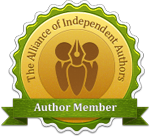|
4/7/2014 Leave the Belt OnApril is National Child Abuse Prevention Month, a time when we understand the importance of family and work together to prevent abuse and neglect. Each of us carries stories about a time when something like this has happened. It may not stand out in your mind as an act of cruelty, but life is full of examples we don't usually consider abusive and sometimes done unintentionally by a parent. As children, we bend the truth to make sense of those acts.
Why do we shut out the truth to bring vivification to a fancifully developed life? My mother has told me some of my earlier memories are fouled by my desire to believe they happened differently. I find myself denying those buried memories, but that doesn't justify what I can recall of my abusive childhood. What happened is something I'd rather not repeat with my children. Two thirds of my childhood was spent away from either parent. Group homes counselors and foster parents filling up the rest my early adulthood. This might make the adage 'It takes a village to raise a child' resonate true. Not always so or at least that's not how I remember growing up. The miracle of life is composed of an odd group of intangible memories we gather growing up, bric-a-brac and curiosities for the mind - easily lost if not dusted off: often damaged and incomplete after being neglected for years. In some ways, my mother's words ring true. Sometimes, the bearer willfully locks away darker images of the past they would rather see placed in an unmarked grave; hoping no one would get up the nerve to dig. Other times, memories like these are tucked away for safe keeping until a way to heal it is possible. I'd like to think life's river runs the latter course, seeking out alternate avenues to correct itself. Such a river courses through me, more like a river seen through a multifaceted diamond, branching off the main source in a brilliant display of light; each glowing spear a swirling memory of the past. The relationship between parent and child can at times be viewed as precariously unstable, if not comically sad. When a relationship becomes strained to the point of breaking – emotional, sexual, and physical abuse are almost a guaranteed bet; often running hand-in-hand with each other like Jack and Jill fetching a pail of water, but you remember how that story ends. In my case, my father did work hard to support us financially, made plenty broken promises, and partied all hours of the night with one-night stands. Luckily, not all families live this way. What my father did to me will never compare to the atrocities I witnessed at the home for abused children called A.S.H. (Albert Sitton Home). They were not simple spankings given to a child endangered of being burned by a stove, an act that leaves minutes worth of pain verses being marred for life by a scar. These terrible acts were the aftermath of demented parenting skills – infants put in full body casts for possibly crying too long while daddy slept – as the forgotten babies lay awake most nights waiting for a bedpan to be changed instead of a diaper. I helped soothe and clean up these babies of misfortune as one of the chores during my stay at A.S.H., a child often caring for those younger than me. Along my way into adulthood I met hundreds of abused children. Some handled the transition from an abusive family to court ordered foster care, while others like myself sought to be reunited with one or both parents. This creates a sense of abandonment that drives the child to reconnect with an abusive parent when he or she has been taken away because of a court’s decision, leaving a child melancholy for a bygone moment of happiness and vulnerable to reciprocate the broken wheel of nurturing love. No matter how much counseling the child receives they will always seek out the affections of their parent, it’s inevitable. Junior high school taught me the futility of running away from foster or group homes towards my father… He disowned me Christmas week in front of my two younger brothers when I was in eighth grade. I’ve never seen him since, nor have I sought him out. The fact he had disowned me did not mean my mother had, also. She had been in and out of my life handling what he – and life in general – threw at her. Most abused children live with these circumstances. Someone will always love you, be it a relative, friend, or maternal parent. Knowing they are out there is encouragement enough to help someone move forward and thrive as adults. Those days are long behind me. A.S.H. has since been replaced by newer complex called Orangewood Children’s Foundation, but nothing will replace my memories. What I witnessed and thankfully lived through has taught me one thing: my children will never know what hate feels like. I know hate is a strong word; however, what I and countless other children have experienced under the banner of 'You made me do this' cannot be called love. We discipline out of love to protect those we love. Discipline does not require a belt or switch to drive the point home. Taught properly, a child will learn right from wrong. It is our responsibility and duty to teach the youth of coming generations the difference between disciplining and abuse. To some, those lines will always be blurred. Don't let the line blur for you. 12/22/2013 Ringing in the New YearWhen the winter months breach our warm comfort zone of fall, I find myself reminiscing over the last eleven months. Bad came with good and long exhausting hours behind a monitor paid off. The Scrooge in me tried several times to surface, but I fed him Christmas cookies sated his desire. Speaking of the famous Mr. Scrooge: Would you disagree Christmas puts a twinkle in the most cynical of people? I don’t.
Ice encrusted window shields and slick staircases might change your mood for a few minutes, but it can’t ruin the day. Just as the days start colder, the streets icier with paper-thin sheets of frozen water to trip up the most cautious driver; we continue to strive for jubilation in the end. Expected whiteouts, blackouts, or the occasional blizzard to halt time itself should blacken our outlook between fall and spring, but none of that overshadows a few shining weeks clearly in the middle of it all. Its when miniature clouds of fluffy white joy begin to fall signaling us to put on one last bash before the new year arrives. Party hats get replaced with reindeer antlers; stolen kisses are permitted under the mistletoe and holiday cheer. Sparkling images of our past glimmer through rear windows in our minds with a familiarity we sometimes neglect to reflect on, as the year progresses towards its inevitable end. The release of soft snowflakes drifting to the ground brings memories of loved ones toward the forefront of a person’s unconscious thought like blossoms on a spring day to brighten spirits. You could say they come on crystallize wings of a wintery Christmas. This is one time during the year bridges become mended to bring people together; albeit, with bubblegum and scotch tape. As long as it all holds together until the big day. Cozy fireplaces blaze to ward off cold winter nights, cities string up multicolored lights and garland to set the stage, stores decorate display windows to complete what can only be described as magical. There isn’t any way someone can walk through a decorated downtown and not feel their state of mind being uplifted – an elated release of emotions involuntarily harbored deep down finding an escape. Christmas does that to people, Scrooge or not. Staring at a Christmas tree decked out with all the trimmings nestled in a corner, alight with a childish glow of yesteryear, brings out the inner adolescent in us all. Miracles seem possible. Childhood fantasies become real if for only a single night, and dreams take flight. Don’t lose that feeling because the season comes to an end. Take it into the next year and the ones to follow. With that said – a Merry Christmas to you and yours! My glass is held high for an eventful 2014 – cheers! Believe, Create, Live. 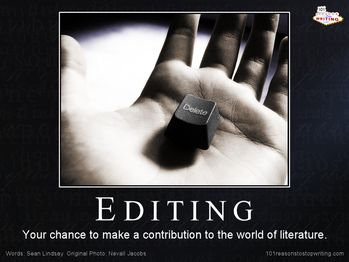 Photo Credit: 101reasonstostopwriting.com Photo Credit: 101reasonstostopwriting.com My writing career started out as a newborn author freshly birthed into the literary world with a pen in hand; unrelentingly sure that my manuscripts would stand up and get noticed without a ticker-tape parade. How? By assuring every word is edited to perfection myself. It was such an obvious choice. However, it turned out to be a horrible course of action (in my opinion). There are better ways to go for proper editing, which I'll talk about later. The end result produced a shoddy pile of words waiting for some roaring bonfire fueled by massive typos. I am not an editor, nor will I claim to be one anytime soon. If only there were someone out there which edited novels for a living. It would help end my writing woes. My confidence in built-in software, like Microsoft Word, began to crumble as I watched terrible prose and misleading uses of the English vocabulary (also known as homonyms) defeat the word processor. That's when I went out on a limb to use my internet for something more than surfing social media sites. It was time to get my work properly edited once and for all. The funny thing is that budgets are always tight when one starts out on a new project. I began my writing career with three shiny wood nickels. Yes, the coffer next to my computer was bone dry and not growing by any leaps or bounds. Suddenly a rainbow brightened on the horizon, April 15th was around the corner. It usually stands for a major payday in some households and mine is one of those. Funding for the much needed edits and the eventual publishing of a printed copy was close at hand. Editing 101 is about to begin. Fasten your seat belts for an extremely short ride, it's going to get bumpy. The road to a perfect novel can come in many forms. Self-editing is one way to get the job done if you have the talent. Some websites offer a computerized version of proofreading/editing manuscripts on the fly. There are even some offering edits for free or at least give you a sample of their editing skills.It is a great place to start. Another is hiring a professional, which can be tricky. Why? Well, because you are entrusting the person at the other end with your novel, expecting them to be better at correcting grammatical mistakes. When a publishing package is purchased, editing is sometimes included. Keep in mind that you may only receive one round of edits, but more might be needed especially if changes are made. Additional editing will cost extra. No matter what route you end up taking it is important to have edits done. Excuses as to why edits were not done don't exist here. Too many options are available to an amateur writer if they look hard enough. I've taken the necessary steps to provide quality in future novels, so should you. 7/1/2013 Funding the Future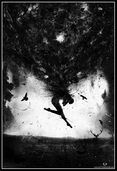 Photo Credit: deviantART Photo Credit: deviantART I'm working with Indiegogo to promote my third novel in the Temperature Trilogy and seek out pledges to finally publish it. If you are a fan of my work but cannot donate at this time, you have another way to back up my efforts that will give the same effect. Sign in to Indiegogo and share the link provided under the video trailer. By doing that little bit you have helped me find untapped resources I might not have reached alone. Please use the campaign link below to find my Indiegogo page and take it from there. Thank you so much for your help. (Quick note: The image on the left is what I hope to use as the third cover.) Follow me on these social websites like Google+ or email me with comments - 6/29/2013 Jumping on the V-Train Blog In my first VBlog, I talk about publishing an ebook with the three top companies: Smashwords, Kindle Direct Publishing, and NookPress (formally PubIt).
Find the books I've published with them here - Nook: http://bit.ly/116li2I Kindle: http://amzn.to/14hshDv Smashwords: http://bit.ly/18nA3Ap I also encourage you to visit my Indiegogo campaign at http://www.indiegogo.com/projects/an-end-to-a-trilogy/x/3443283 5/19/2013 A Simple Review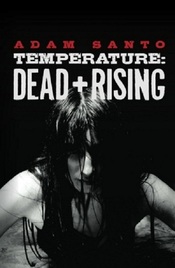 BOOK REVIEW An ancient, evil organization hunts two undead companions in Santo’s dark fantasy debut. While driving friends through a mountainous state park in Colorado, 26-year-old Sally Mertill loses control of her car. The crash is fatal to all, including Sally, but her body is thrown free of the burning wreck, and her autopsy at the understaffed Colorado Springs morgue is delayed. Centuries-old Bocnic “Bo” Drewings, who belongs to a clan of powerful undead sorcerers, finds her there and explains that a Wakening ritual, performed by mysterious Powers-That-Be, has returned her to life. For the time being, her body thinks it’s alive and still craves food and sex, although Bo assures her that those urges will stop. Later, after Sally jumps from Bo’s car, he teaches her healing magic. Soon Bo discovers that The Cross—religious militants bent on exterminating supernatural beings—are hunting Sally, and he brings her to a reservation of undead people, where a shaman uncovers an important secret about her… He also brings sexy humor to a genre that sometimes takes itself too seriously; after Bo traps her in golden handcuffs, Sally pulls him in for “a deep kiss with longing written across her lips.” The author delivers compelling atmosphere; during the opening scene, flickering lights are described in a way reminiscent of the 1979 film Alien. - Kirkus Reviews If you’d like a copy please contact the author directly at [email protected] , www.panhandlingfantasy.com , or check your local bookstore for a copy. (Note: Paperback copies will be released again soon. Minor changes and Kirkus review are being added to interior pages.) 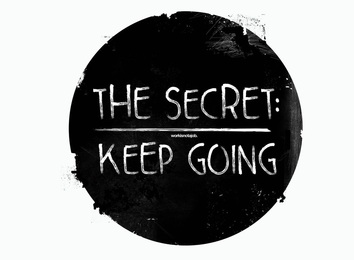 To this point we have covered a lot of ground in a short period. A world has been born, characters are on the hunt for adventure, and banter is rampant amongst them. Whether the story ends with a bang or a soft good bye; it has to stop somewhere. But, is the first story of your career complete? No. Not even close. Over the course of building a story errors will be made to the overall manuscript. Your first draft is done, but edits are inevitable. I don't know of a single author that doesn't have to rewrite something or fix a scene for continuity. This is where my fourth and final post in the series will end. A few things must be considered before tackling such a beast. READ what was written before putting chapter after chapter on the chopping block like an execution, because this is the first step in editing. Skimming through some of those chapters might find them new homes somewhere deeper in the story where they fit better and others might need small tweaks to stay where they are. Reading it again helps you see where continuity of the story went awry. All of this brings the story closer to completion. Finished? Good, because you just got started.The time has come for a second draft. Magic begins here. Words are clay in your hands as you continue to mold the story into a beautifully shaped vase. Step two is actually editing everything (rewriting a manuscript for a second draft). That is accomplished by removing useless words or grammar as you read it thoroughly. I prefer to print out my manuscript for this process; however, you may wish to save paper and edit directly from whichever word processing program you use. Changes are done, the story flows in a constant timeline that makes sense. What next? I would hand (email) a copy to friends and/or family willing to sit a spell and read it. Feedback at this point will help mold the story further - a second pair of eyes to critique your manuscript won't hurt. Joining a writing community online or in your home town is a good place for feedback too. It is actually in your best interest to hear early on what others think before committing to a physical print of your work. The next step is coming soon. Take of they tell you and sculpt it into your masterpiece. Step three is revisions. Listening to feedback and altering scenes becomes a multi step process. Don't rush! Your exquisitely crafted vase comes with patience and perseverance. Rework scenes to be more descriptive, add dialogue to explain confusing actions, and above all else check for a smooth flow from chapter to chapter. Once everything detail has been corrected, it is time for a professional to take over. Step four might be the most important beside writing a good novel. Hire an editor. There is an abundance of editors/proofreaders out there to choose from. Look to fellow writers for recommendations or use the editing services of an indie publisher for final polishing of your manuscript. Editing isn't always perfect the first time. What comes back from an editor are more than just grammatical corrections, new suggestions for plot or fleshing (developing) out a particular character are a few things to expect. Some companies charge for each round of edits. Whenever you change major parts of a story more edits will have to be done, hence the charge for each round. Do as much editing as you can through online writing communities before leaping in with both feet. Don't in debt because you bought too many editing packages; use the free resources available to you first. You are now ready for beta readers to test drive the vivid world and charismatic people you've created. Take their feedback, revise, repeat - so is the life of a writer. Well, by this point you've completed the not-so-impossible: writing a novel. Congratulations! Sitting on your desk is a finely crafted vase made of neatly stacked paper and ink ready for shipment to a large publishing house or awaiting a final coat of paint (cover art and a back cover blurb). We've had a wonderful time together trapping those ideas to paper. Now get to work. Stop dillydallying over pictures of kittens or how to win a Sudoku game, because readers, like me, are waiting for the next great novel. Good luck becoming an author. I wish you luck in converting what started out as a hobby into a career.  My first two blogs drew a simple line from doing an outline to understanding your inner characters. Now we stare down a beast that taunts me from the darkened corners in my office, dialogue. When two people talk there is chemistry - it's an intertwining play of words that fit together like pieces of a puzzle. Speech is just as important as the dynamic action you wrote. Although the verdict is still out about which, dialogue or narrative, is more important. I'm just going to focus my efforts somewhere in the middle. My stories tend to steer towards a narrative-driven novel, but I'll aim for dialogue-driven one day. When things are on the line in a particularly stressful scene what keeps the suspense going? Hearing a narrative of the action or listening to the high pitched squeal of a character as the group of teenagers are chased through the woods? This is why a controversy surrounds which is better. Here is an example of a story ruled by narrative: John guided his little sister Triva through the dense forest. Long shadows obscured the deer trail leading back home making it difficult to traverse the narrow path. John shrugged off his backpack to pull out a flashlight. Their parents said to be home hours ago, but they had lost track of time in the deepest reaches of the arcade. Now, diminishing light made their usual shortcut home creepy. Triva let out a yelp of fear when she tripped over well hidden tree root beneath the veil of murky fog like diaphanous spiderwebs spread across the ground. On frozen November winds an owl's hoot ran shivers down John's back as it few over in search of an evening meal. "We need to get home," she pleaded. "It isn't far," John consoled. He knew they were twenty minutes from home, but kept that to himself or risk scaring his little sister worse. A slender beam of light from his flashlight lit their path a few feet where the growing darkness engulfed what light his battery-powered torch emitted. Snapping twigs stopped him abruptly, John listened intently over his sister's heavy breathing for more movement. Silence ruled once again. Now, what happens to the same example if we use dialogue? Let us take a look: John guided his little sister Triva through the dense forest. "You wanted to play one more game, didn't you?" He said in a stern voice, attempting to mimic their father's authoritative tone. "I refuse to lose to a boy. He took my high score," Triva replied. Long shadows grew over the path, "Watch your step," John muttered as he kept his eyes on the narrow deer path. "The sun is almost gone and I can't see where we're walking with so much fog covering the ground. The fog is acting like it wants to stick to everything." Several cautious steps later, Triva gave a trembling plea, "We need to get home." Something in the air scared her; it chased at his nerves too. Frosty winds glided an owl overhead unseen through the surrounding trees outstretched limbs, a loud hoot shot shivers down his spine and had his sister climbing into his backpack. "It isn't far," John consoled. He knew they were twenty minutes from home, but kept that to himself or risk scaring his little sister worse. He shrugged off the backpack and fished out a small flashlight hoping the batteries were still good. With a click of the switch a thin beam of light shone out a few feet to vanish into thick darkness. "What was that?" Triva whispered in hushed terror. "Twigs breaking under a deer's weight. It's looking for this path we are borrowing to get home," John told her. "If we keep moving maybe it will go away." He listened intently for any other movement, heavy silence ruled once more. I'm sure you can tell the distinct difference between the two stories. There is a certain intensity created by either style, yet neither is a wrong way to tell it. Sometimes having a person say what is going on can drive the adrenaline up in a reader. Other times, build up to the action through narrative can accomplish the same thing. Try both ways to see what fits you best. I mentioned in my last post about dialogue being the bane of my existence. I should clear that up some with an explanation. What I wrote above isn't where I am struggling. I save half of my dialogue for when I've completed the manuscript so I can work out WHAT is talked about between characters. It is the conversations they have that kill me. I cannot speak for every writer, but this leisure small talk amongst characters is difficult. Sometimes I can fix my 'small talk' issues by digging a deeper background on each character sheet I create. Build stronger histories for them to sneak in backstory by having them talk about a past event they shared. Short stories, novellas, and novel all have one thing in common: dialogue. Unless you're making a silent film for print have them talk. Sometimes allow them ramble on to themselves. But, never forget to have a character speak. They need a voice, they are your voice. Let them be heard. Adam Santo was born and raised in Southern California before moving to Colorado for a short fifteen year stay. Currently he lives in Florida with his family. He has a passion to help with Parkinson's Research and continually seeks out donations for finding a cure. Please follow Adam's efforts here. His current works are The Temperature Trilogy and Ocean's Fury. More can be found at my publisher http://www.panhandlingfantasy.com  Photo provided by http://www.flickr.com/photos/61219542@N00/1314358266 In my last post I talked a little about outlines and where they could lead. Today, I want to focus on characters and their importance (in short form because otherwise this could be a very long blog) to a story. Some hero will vanquish an evil ruler, but who is he/she and why does this person care about destroying evil? What traits or skills does a person need to defeat tyrants? The questions could be endless, but I'll leave the path of character discovery to you. What we will look at is a character's biography laid out in your mind that needs to ink on paper. Knowing character traits will elevate fictional characters to new heights if their strengths and weaknesses are fully fleshed out. Does he/she shrink away from confrontation? Is the main character outgoing/an introvert? These are things you will inevitably need to know to breathe life into a make-believe person. One way I think could help with developing fictional characters would be using one of the many role-playing player bio fact sheets out there. It might bring on ideas not thought of while building personalities in a fictional world. Give some of your main characters birth dates to liven up the story. Somewhere long the way that person could have an unexpected party - wanted or not. Character fact sheets will also assist with what a person looks like. Hair color, length, and maybe the style the person wears is important. Describing the clothes could add to the overall feel of who you are creating. This should start you on the right path to building characters and bring depth to those you love dear milling about in your head. Next week I plan to speak a little about dialogue. I will admit to a small secret about this next subject, it's my Achilles’ heel. I tell you more next week. And how I work it out. About the Author: Adam Santo was born and raised in Southern California before joining the Army for his short lived career as a soldier in Colorado Springs. Currently living and writing in Florida with his family and faithful dog, Copper. He has written the Temperature Trilogy and a short story, Ocean's Fury, to date. 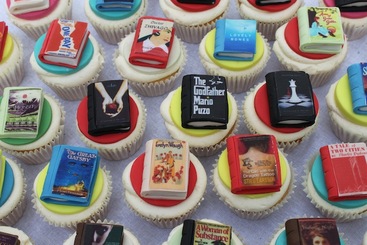 What's in a story? A lot of words - right, but what else? We take for granted the author's creativity. Their hours toiling over scenarios, building plots, breathing life into characters, and let us not forget that they strive to make it all believable should not be overlooked. So how does a writer get started? That's the purpose of this post; understanding what pieces of the puzzle writers use to join puddles of words together for a meaningful story. Think of story building as parts of a body. It all begins (for the most part) with an outline: the bones to start building upon. This is where a story forms. We need to come up with a beginning, middle (climax), and an end. Where better to start than with the skeletal structure of an outline. Whether you draw it up like a bracket for a game tournament or as a giant arch, an outline is just a guide to point your story in the right direction. From here it is easy to draw in branches for intriguing subplots, add minor rolls for characters to interact with the main ones, and stabilize the backbone to the whole story. Writing an outline is also very much like pruning a tree - cut away the dead from the main story before it kills your story. Doing this will eliminate hours of writing useless distractions that could be better spent on relevant story building. A concern about sub-plotting is how minor characters are used in a story. Creating strife within the story is always a good idea, but don't go too far. Are the twists to titillate the readers curiosity and broaden a stagnating story or are you sent the character off into the deep end without teaching them how to swim? Reel them in before too many story threads tie up your story. The best thing to remember is focus on the main character(s) throughout the whole process. Think about how you intend to reach the climax and work towards it. Resolve any issue you've created for the character either before, during, or shortly after the main conflict to bring a nice closing to your story. Believe it or not - you just wrote a story. There is a lot more to do, but this is where it all begins. We still have four more parts to cover yet. In the coming weeks I will elaborate on four more parts to building a story. My posts will be as short, and albeit frank, but I hope you are able to learn a little from each posting. Come back to learn more. About the Author: Adam Santo was born and raised in Southern California before joining the Army for his short lived career as a soldier in Colorado Springs. Currently living and writing in Florida with his family and faithful dog, Copper. He has written the Temperature Trilogy and a short story, Ocean's Fury, to date. |
About the Author
Adam Santo is a SciFi/Fantasy writer who enjoys the quiet moments to write stories. His debut novel, Temperature: Dead and Rising, took the world for a ride they would soon not forget. Santo began plotting out the second paperback novel, Temperature: Bitter Cold, before the ink dried on his first book. Santo continues to write nonstop because he knows there is always a story waiting to get out. Archives
April 2014
|



 RSS Feed
RSS Feed
